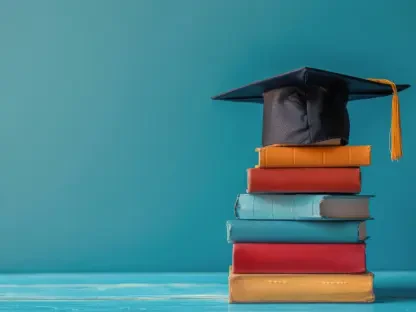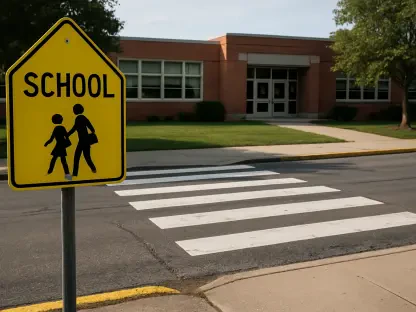In an era where technology permeates every aspect of daily life, the presence of smartphones in schools has sparked intense debate among educators, parents, and policymakers. These devices, while offering undeniable benefits like instant access to information and communication, often become sources of distraction, pulling students away from lessons with notifications, games, and social media. A striking statistic from a recent Pew Research Center analysis underscores this divide: 72% of high school teachers consider smartphones a significant hindrance to focus in the classroom. As states and districts grapple with how to manage this challenge, new policies are emerging to restrict device usage during school hours. This growing movement aims to create environments conducive to learning, yet it also raises questions about safety, accountability, and the role of technology in education. The tension between fostering academic engagement and addressing modern needs lies at the heart of this complex issue.
Emerging Policies on Device Restrictions
Florida has taken a bold step in addressing smartphone distractions with a law effective since July 1, which regulates the use of wireless devices like smartphones, tablets, and smartwatches in schools. This policy imposes stringent limits, particularly for younger students, prohibiting any device use from bell to bell in elementary and middle schools. For high schoolers, usage is barred during instructional time unless a teacher grants permission in designated areas. Beyond the state mandate, districts like Volusia County have introduced even tougher rules, requiring phones to be turned off or set to airplane mode during school hours, with additional bans on secret recordings and unauthorized earbud use. These measures reflect a broader intent to minimize interruptions and curb misuse, such as cheating or bullying through digital means. While the law allows students to carry devices, it restricts active use, striking a balance that some districts push further with outright possession rules tailored to local needs.
This trend of restriction is not isolated to Florida, as other states have followed suit with similar initiatives to limit smartphone presence in educational settings. Since Florida pioneered classroom phone restrictions a couple of years ago, states like Indiana, Ohio, Iowa, and New York have enacted comparable policies to enhance focus during learning hours. However, resistance exists, as seen in Arizona, where a proposed ban was vetoed under the belief that schools can handle such matters independently. A pilot program in six Florida counties is currently testing a full-day ban on high school phone use, offering a glimpse into potential future adjustments. These varied approaches highlight a national conversation about the best way to integrate or limit technology in schools. The experimentation with policies suggests that while the goal of reducing distractions is widely shared, the methods and extent of enforcement remain subjects of ongoing debate and refinement across different regions.
Balancing Benefits and Challenges
Smartphones in schools present a double-edged sword, offering tools for learning while posing significant risks to student attention and behavior. On one hand, many teenagers—70% according to recent studies—view these devices as having a net positive impact, with nearly half crediting them for aiding their education through quick research or educational apps. Teachers, however, often see a different picture, with a majority citing constant interruptions from notifications or non-educational content as a barrier to effective teaching. The potential for misuse, such as recording inappropriate content during emergencies or engaging in cyberbullying, further complicates the issue. Proponents of restrictions argue that curbing access during school hours can mitigate these negative behaviors, creating a more focused and respectful learning environment. Yet, the challenge lies in ensuring that such policies do not stifle the legitimate advantages technology can provide when used appropriately.
Critics of smartphone bans raise valid concerns about safety and accountability, pointing to scenarios where immediate communication could be critical. In emergencies like school shootings, a phone can be a lifeline for students to contact family or authorities, a concern heightened by the unpredictability of such events. Additionally, these devices allow students to document instances of bullying or staff misconduct, serving as a tool for transparency that might otherwise be unavailable. While Florida’s law includes exemptions for medical needs supported by clinical evidence, broader safety considerations remain a sticking point for many parents and advocates. The nuanced approach of allowing districts to customize rules attempts to address individual circumstances, but it also creates inconsistency that can confuse stakeholders. As policies evolve, finding a middle ground that prioritizes both academic focus and student well-being remains a pressing challenge for educators and lawmakers alike.
Looking Ahead to Sustainable Solutions
Reflecting on the steps taken, Florida’s implementation of device restrictions marked a pivotal moment in the effort to enhance classroom focus, inspiring a wave of similar actions across various states. The balance struck by allowing possession but limiting usage, alongside tailored district policies, showed an attempt to adapt to diverse educational needs. Pilot programs testing full-day bans offered valuable insights into the feasibility of stricter measures, while exemptions for medical reasons demonstrated a commitment to individual circumstances. The varied responses from different regions, including outright vetoes of proposed bans, underscored the complexity of achieving consensus on this issue.
Moving forward, the focus should shift toward creating adaptable frameworks that schools can customize based on their unique environments. Collaboration between educators, parents, and students could help shape policies that address safety concerns while minimizing distractions. Investing in digital literacy programs might also equip students to use technology responsibly, reducing the need for outright bans. Exploring innovative tools, such as device management systems during class time, could provide practical alternatives. As the role of technology in education continues to evolve, ongoing dialogue and data-driven evaluations will be essential to ensure that solutions remain effective and equitable for all involved.









